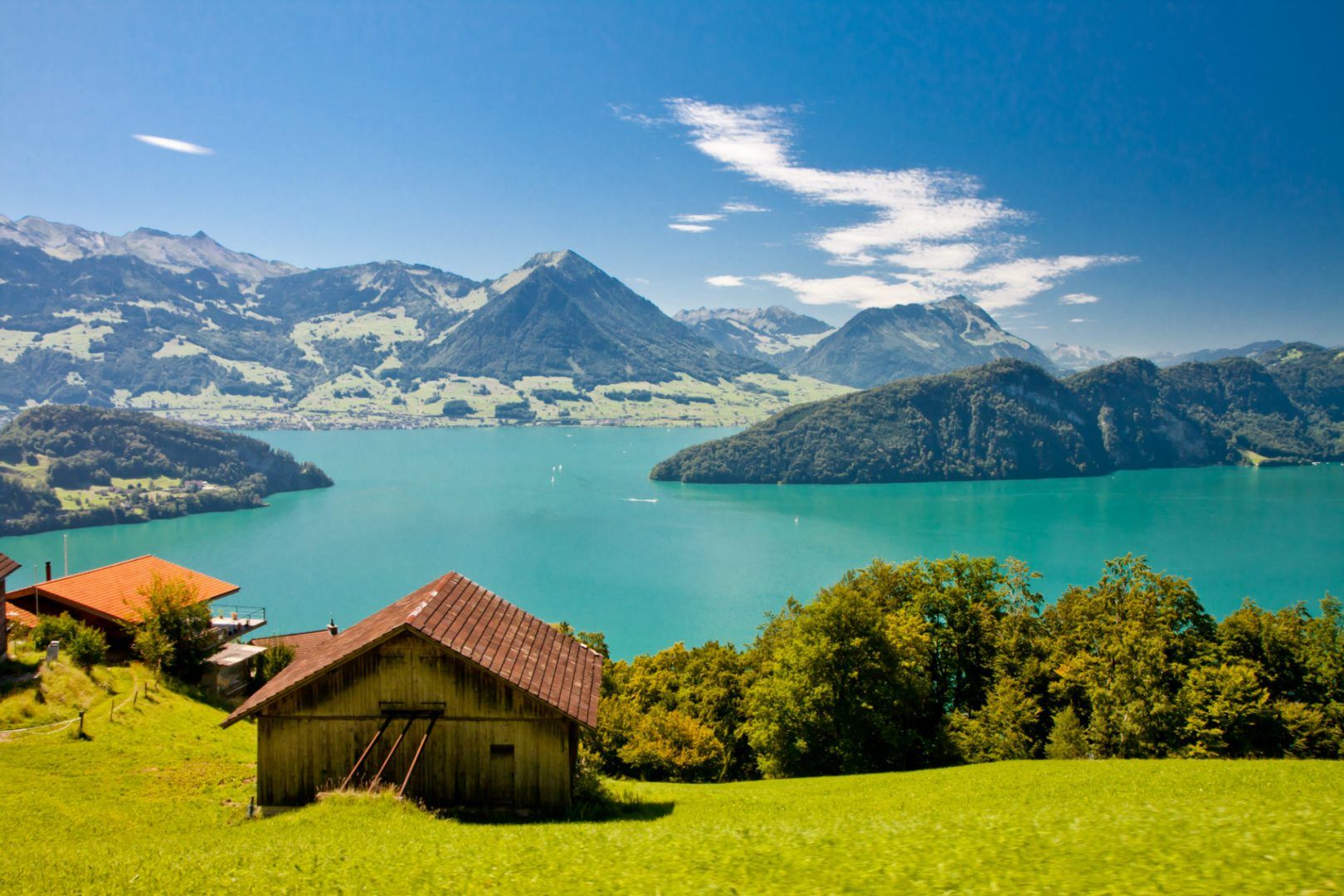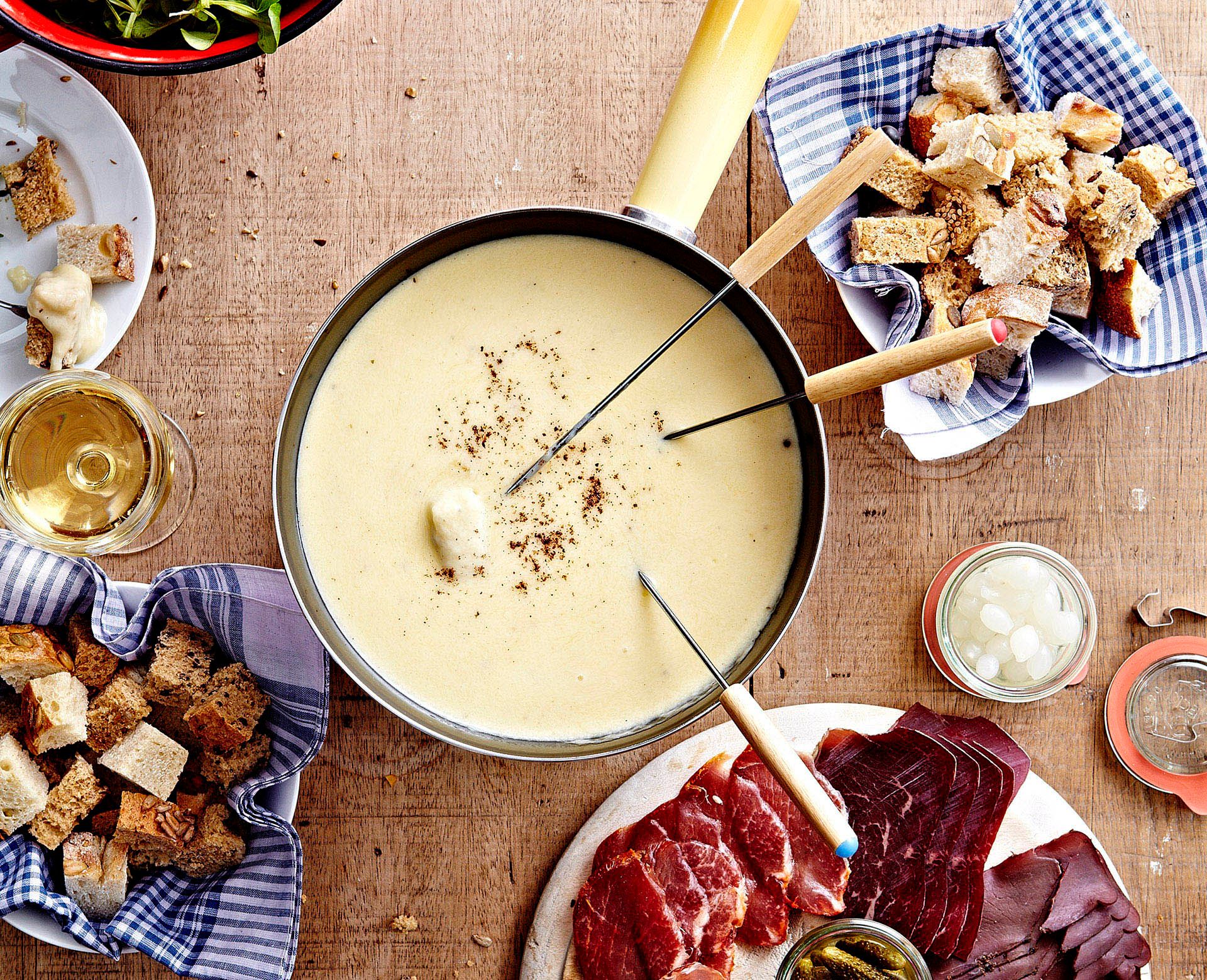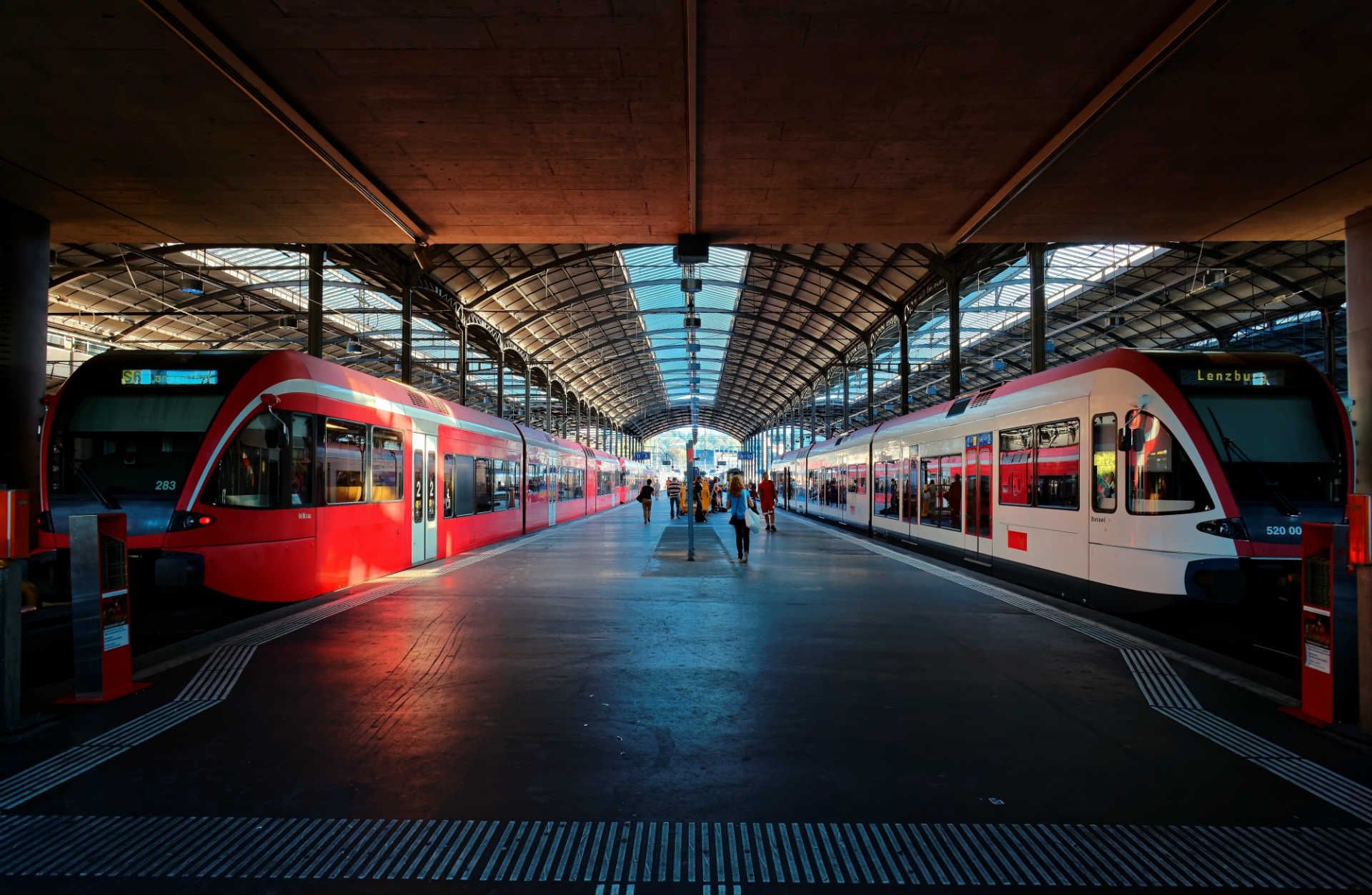The Spreuerbrücke
Just downstream of the Kapellbrücke, the Spreuerbrücke is, if anything, more atmospheric, thanks to its macabre “Dance of Death” roof panels.
The succession of images shows a grinning skeleton leading kings, gallant princes, lawmen, nuns, merchants, prostitutes, peasants and maidens alike to their inevitable fate.
The Old Town
The north bank of the Reuss is home to the Old Town’s most atmospheric cluster of medieval houses, with Mühlenplatz, Weinmarkt, Hirschenplatz and Kornmarkt forming a compact ensemble of cobbled, fountained squares ringed by colourful facades.
Modern commerce is definitely the motivating force of the place these days, though it takes little imagination to conjure up the Middle Ages in the narrow maze of streets, even with the welter of shoppers and familiar brand names.
Jesuitenkirche and around
The Old Town extends to the south bank of the Reuss. Facing Unter der Egg is the huge Jesuitenkirche, dominating the riverside with its twin onion-domed towers.
Completed in 1673, its interior is a frothy Rococo concoction of gilt stucco and marble. Among the profusion of frescoes is one on the ceiling that, intriguingly, depicts the church exterior as it was three hundred years ago.

















